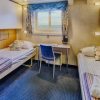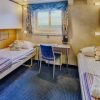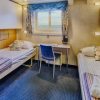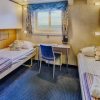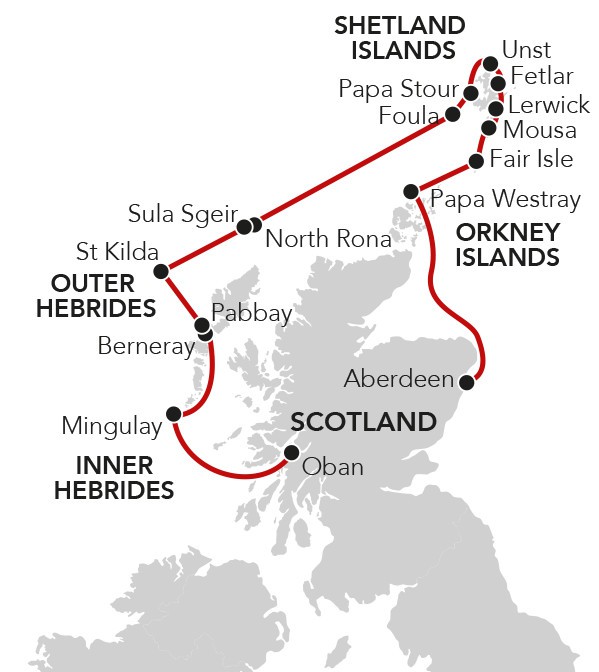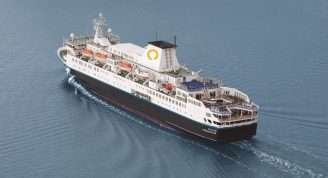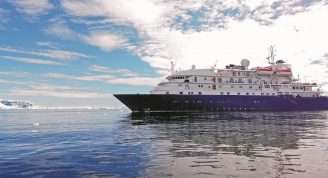Description
You can travel the world visiting all manner of exotic and wonderful places without realising that some of the finest scenery, fascinating history and most endearing people may be close to home. Nowhere is this truer than around Scotland’s magnificent coastline, an indented landscape of enormous natural splendour with offshore islands forming stepping stones into the Atlantic.
This unique voyage will appeal to those who prefer their islands deserted, but with abundant bird and wildlife. If you have always had a hankering to visit some of the remotest and most inaccessible islands in Scotland, this is the ideal opportunity. Join us aboard the Ocean Nova as we sail from the port of Oban to the islands on the edge, visiting both inhabited and uninhabited islands and places of great natural beauty, rich in wildlife and mystical history, many with a long history dating back to the Iron Age.
Few cruise ships offer the chance to explore in-depth the islands off the northern coast of Scotland. This unique expedition includes the remote, uninhabited outposts of St Kilda and North Rona with the inhabited island of Foula and the northernmost point of the United Kingdom at Unst. Such a trip would be almost impossible to arrange independently and requires a small ship with the expeditionary qualities of the Ocean Nova. With just over eighty travelling companions, the atmosphere is more akin to a private yacht trip and ashore with our local experts and expedition members we will divide into small groups thereby enjoying a more comprehensive and peaceful experience.



